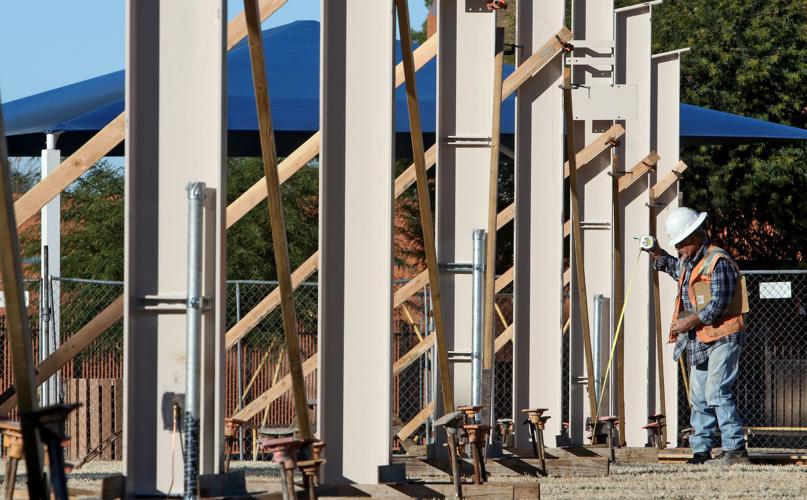The Amphitheater School District will install solar energy at all of its schools by September 2016 as part of its initiative to go green and save power costs.
The district kicked off the installation and construction process at six of its schools. They are: Harelson, Holaway, Mesa Verde and Walker elementary schools as well as Cross and La Cima middle schools.
“This really shows that Amphitheater schools is leading the way in green energy,” said Jim Burns, executive manager of operational support for the district.
Many school districts in the Tucson area, including TUSD and Marana, have undertaken large-scale solar projects for their school campuses and district facilities.
In the first year of operation, the solar panels are estimated to generate more than 60 percent of Amphi schools’ electricity needs, Burns said. That’s about $100,000 in savings.
Over the next 25 years, the project is expected to save the district about $23 million.
Through an agreement with a solar provider, the district is getting the panels and infrastructure for free, Burns said. The only obligation is to buy the electricity that is produced from the panels. The rate will stay flat over 25 years.
“It really reduces our risk factor,” he said, “We’re still connected to the grid. If solar doesn’t work, we simply have to buy the power from Tucson Electric Power.”
Another benefit to installing solar energy is that it will significantly reduce the district’s carbon output, he said. The benefit to the environment would be equivalent to the district planting 440,000 trees over the next 10 years or removing 3,543 cars from Tucson, he added.
The solar panel structures will also provide much needed shade for students, he said. The school plans to place picnic tables and benches underneath so that the children can take advantage.
The district will incorporate solar energy, its uses and mechanics into students’ curricula, he said. Lesson plans, fact sheets and experiments are being developed.
“Our science department is looking at how to best integrate them into classrooms,” Burns said.
The kids at Harelson Elementary School, where construction has already begun, are already looking forward to what’s to come, said Diana Walker, the principal.
“The kids are excited and in awe of standing and watching the equipment,” she said. There’s a lot to be learned even in the construction process.
When the panels start generating power, students will also be able to monitor solar energy in real-time using their computers, she said.
“The teachers are going to eventually be sharing more about it and explaining more of what’s going on,” Walker said. “And when the kids are out there, they will be able to know what’s happening.”





